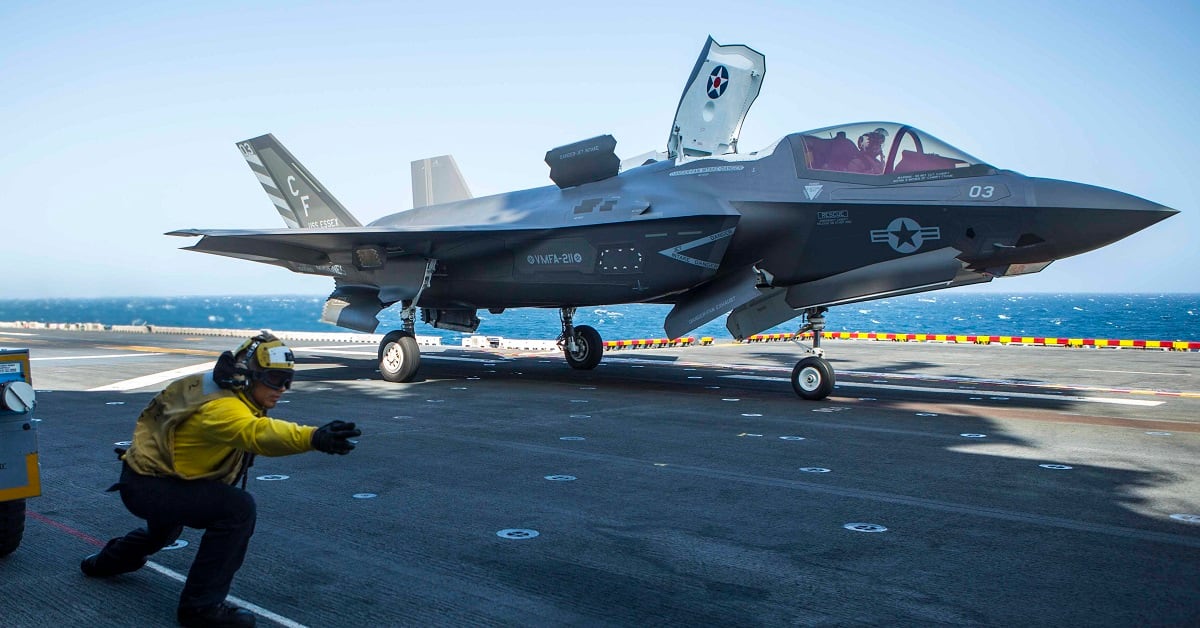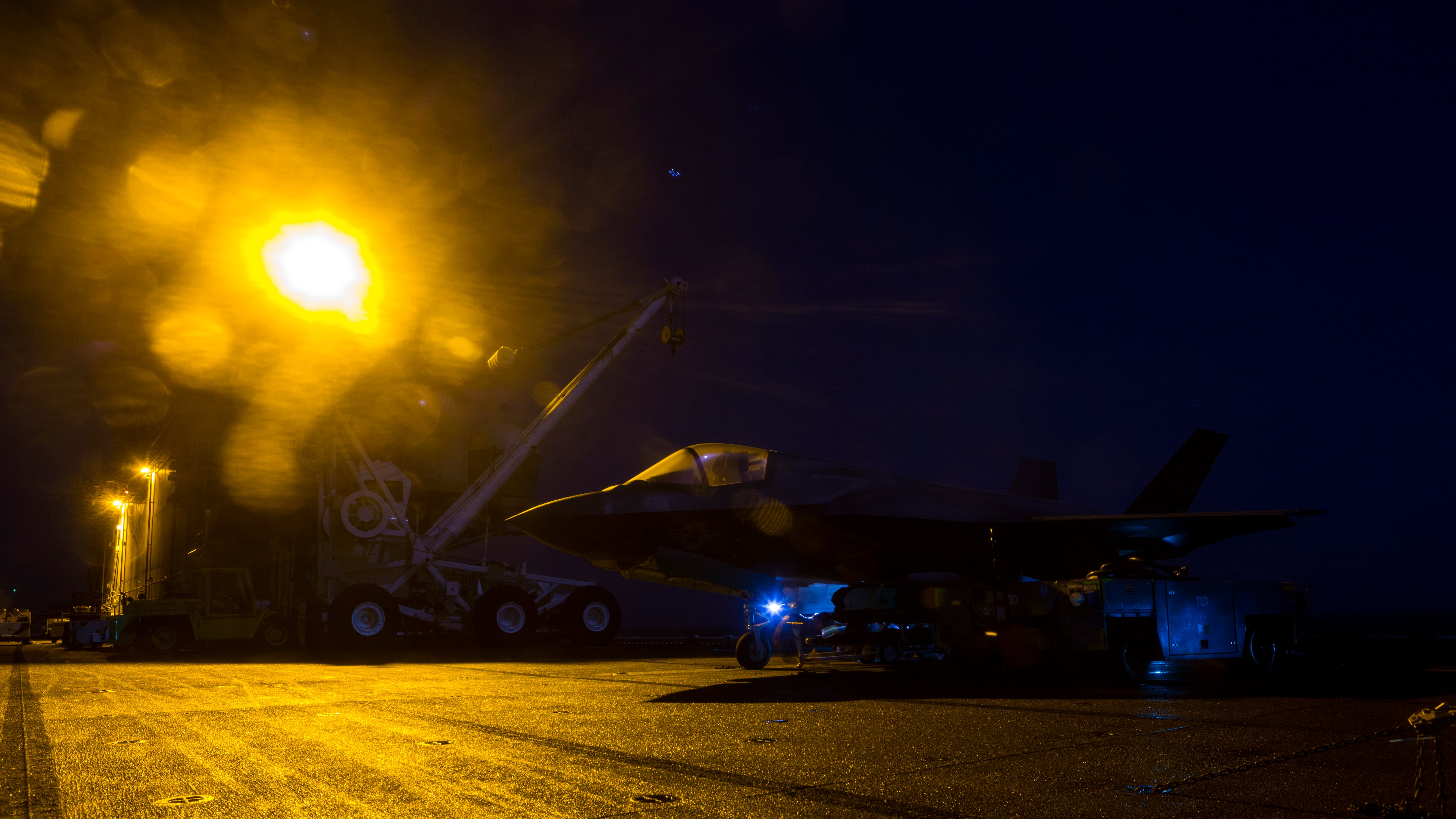The U.S. Marine Corps F-35B joint strike fighter has successfully conducted its first combat mission over Afghanistan, U.S. officials confirmed to Military Times.
The strikes, carried out by F-35Bs assigned to the 13th Marine Expeditionary Unit, occurred Thursday morning against a fixed target “in support of ground clearance operations,” and were deemed a success by the ground force commander, according to a statement put out by U.S. Naval Forces Central Command on Thursday afternoon.
Marine Fighter Attack Squadron 211 made history earlier this month as they became the first squadron with F-35Bs to deploy to the U.S. Central Command area of operations aboard the Wasp-class amphibious assault ship Essex.
“The F-35B is a significant enhancement in theater amphibious and air warfighting capability, operational flexibility, and tactical supremacy,” said Vice Adm. Scott Stearney, commander, U.S. Naval Forces Central command. “As part of the Essex Amphibious Ready Group, this platform supports operations on the ground from international waters, all while enabling maritime superiority that enhances stability and security.”
“The opportunity for us to be the first Navy, Marine Corps team to employ the F-35B in support of maneuver forces on the ground demonstrates one aspect of the capabilities this platform brings to the region, our allies, and our partners,” said Col. Chandler Nelms, commanding officer of the 13th MEU.
RELATED

Although the Marine Corps is the first U.S. service to fly its joint strike fighters in combat, the aircraft has been used by the Israeli air force to strike targets. In May, Israel Defense Forces officials confirmed that the country’s F-35 “Adir” fighters had seen combat in two airstrikes somewhere in the Middle East.
The Marine Corps declared the F-35B operational in 2015, becoming the first service to integrate the joint strike fighter into its fleet. The Air Force followed by declaring initial operational capability for the F-35A conventional variant in 2016, while the Navy plans to declare IOC on the F-35C carrier variant in February 2019.

The joint strike fighter is the most expensive program in the Pentagon’s history, projected to cost about $1 trillion to develop, produce, field and sustain over its lifetime, according to the Government Accountability Office.
The F-35B is the short takeoff, vertical landing variant of the aircraft, allowing the pilot to hover and land vertically like a helicopter — a necessity for the Marines, which typically operate from amphibious ships with smaller decks than aircraft carriers.
The Marine Corps reported its first loss of an F-35 earlier this year, after damage from a fire two years ago led the service to scrap that plane from its inventory.
Tara Copp is a Pentagon correspondent for the Associated Press. She was previously Pentagon bureau chief for Sightline Media Group.
Valerie Insinna is Defense News' air warfare reporter. She previously worked the Navy/congressional beats for Defense Daily, which followed almost three years as a staff writer for National Defense Magazine. Prior to that, she worked as an editorial assistant for the Tokyo Shimbun’s Washington bureau.



